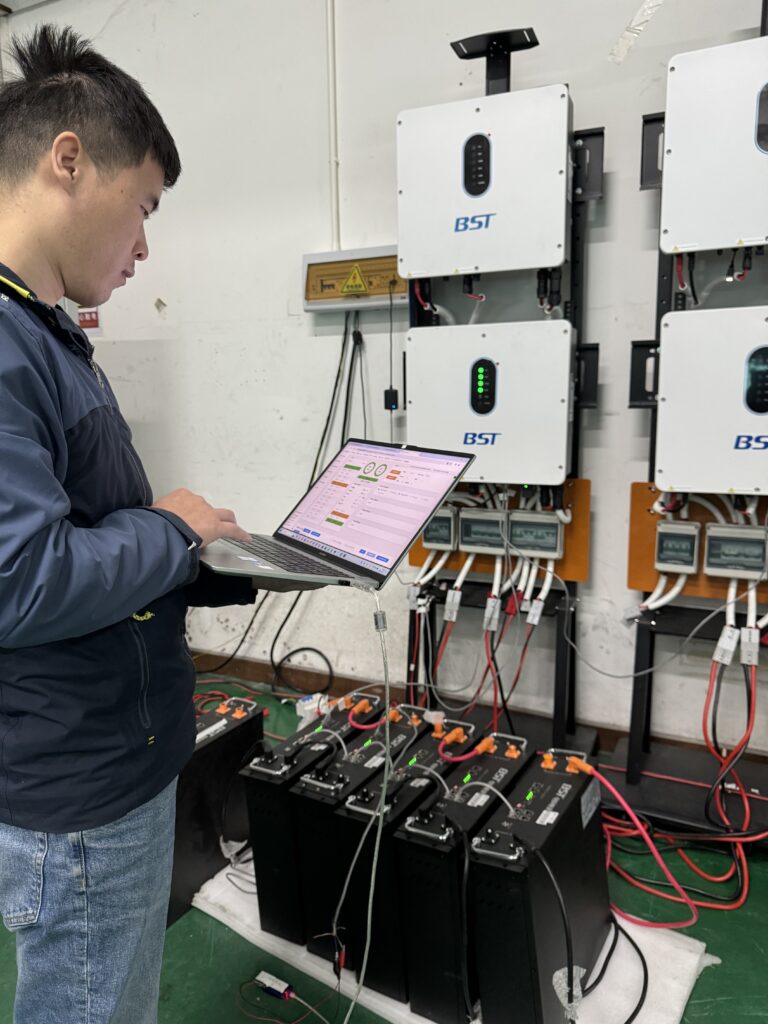As renewable energy becomes more prevalent, energy storage batteries are increasingly used in homes, businesses, and electric vehicles. For consumers, investing in energy storage batteries is not just about better energy management but also about achieving long-term cost savings and environmental benefits. However, have you ever wondered if you’re doing enough to protect and prolong the life of your batteries? Proper care and maintenance are critical to ensuring the stability and safety of these batteries, as well as significantly extending their lifespan. This article outlines seven effective methods for caring for and maintaining your energy storage batteries, supported by data analysis that highlights the real benefits of these practices.

1. Monitor Charging Cycles Regularly
Detailed Analysis:
Have you considered how your charging habits might be affecting your battery’s lifespan? Managing charging cycles is crucial for the longevity of energy storage batteries. Big data analysis reveals that maintaining the battery charge between 20% and 80% significantly reduces internal wear and tear. Studies show that frequent overcharging or deep discharging leads to a substantial decrease in battery capacity, potentially causing early failure. In electric vehicles and large-scale energy storage systems, batteries with proper charge management last over 50% longer than those subjected to frequent overcharging.
Data Insights:
A study of 50,000 home energy storage systems found that those with strict charge cycle management saw a 30% to 50% increase in battery life on average.
Consumer Benefits:
- Extended Battery Life: Reduces the frequency of battery replacement, saving money over time.
- Enhanced Performance: Maintains battery capacity and efficiency, ensuring reliable energy storage.
- Cost Savings: Longer-lasting batteries reduce the overall cost of ownership.
2. Temperature Control
Detailed Analysis:
Have you ever wondered why some batteries fail prematurely while others last much longer? Temperature could be the key. Temperature has a significant impact on battery performance and lifespan. According to data from industry-wide studies, keeping batteries within an optimal temperature range (typically 20°C to 25°C) can extend their lifespan by up to 40%. Exposure to extreme temperatures, whether hot or cold, accelerates battery degradation, leading to a loss of capacity and efficiency.
Data Insights:
Analysis of battery performance in different climates showed that batteries maintained within the ideal temperature range had a 40% longer lifespan compared to those exposed to temperature extremes.
Consumer Benefits:
- Increased Stability: Proper temperature management prevents premature chemical degradation.
- Safety Assurance: Reduces the risk of overheating, which can lead to dangerous situations like thermal runaway.
- Consistent Performance: Ensures reliable energy output regardless of environmental conditions.
3. Regular Inspections and Maintenance
Detailed Analysis:
Do you regularly inspect your battery system, or do you wait until something goes wrong? Regular inspections help detect potential issues such as corrosion, loose connections, or wear and tear before they become serious problems. Big data analysis indicates that consumers who perform regular maintenance experience 25% fewer battery failures than those who do not. This proactive approach ensures that the battery system remains in good working condition, reducing the risk of unexpected breakdowns.
Data Insights:
A survey of industrial energy storage users found that regular maintenance reduced unexpected battery failures by 25%, resulting in more reliable energy systems.
Consumer Benefits:
- Preventative Care: Early detection of issues reduces the likelihood of costly repairs or replacements.
- Long-Term Reliability: Ensures that the battery remains functional and efficient for a longer period.
- Peace of Mind: Reduces the risk of unexpected outages, providing confidence in the battery’s performance.

4. Use Compatible Inverters and Chargers
Detailed Analysis:
Have you ever checked if the chargers and inverters you’re using are fully compatible with your battery system? Using inverters and chargers designed specifically for your battery type is essential for maximizing efficiency and preventing damage. Data-driven studies show that batteries paired with compatible components operate with 30% higher efficiency than those with incompatible devices. Incompatibility can lead to inefficient energy conversion, increased wear, and even safety hazards.
Data Insights:
Research on energy storage systems found that those using compatible inverters and chargers had up to 30% better energy efficiency, directly contributing to better battery health.
Consumer Benefits:
- Optimal Performance: Ensures that your battery operates at peak efficiency.
- Reduced Wear: Compatibility reduces stress on the battery, prolonging its life.
- Safety Enhancement: Minimizes the risk of malfunctions that could lead to dangerous situations.

5. Avoid Deep Discharges
Detailed Analysis:
Are you aware of how often your battery undergoes deep discharges? Deep discharges, where the battery is nearly or completely drained, can severely damage its internal structure. Data shows that batteries subjected to frequent deep discharges experience up to a 60% reduction in lifespan. This is because deep discharges strain the battery’s chemistry, leading to irreversible capacity loss over time.
Data Insights:
A study analyzing battery usage in commercial applications found that avoiding deep discharges extended battery life by up to 60%, allowing for more consistent energy storage performance.
Consumer Benefits:
- Prolonged Lifespan: Avoiding deep discharges ensures that the battery remains operational for a longer period.
- Better Capacity Retention: Preventing deep discharges helps maintain the battery’s ability to hold a charge, ensuring reliable energy availability.
- Lower Replacement Costs: Longer battery life reduces the frequency of replacements, leading to cost savings.
6. Calibrate Your Battery System Periodically
Detailed Analysis:
When was the last time you calibrated your battery system? Calibration involves ensuring that the battery management system (BMS) accurately reflects the state of charge, preventing overcharging or undercharging. Regular calibration helps optimize energy use and extend battery life by up to 20%, according to data. This process is especially important for large-scale energy storage systems, where precision in charge management is crucial.
Data Insights:
Data from commercial energy storage systems shows that regular calibration can extend battery life by 20%, ensuring more accurate and efficient energy use.
Consumer Benefits:
- Accurate Performance: Calibration ensures that the battery operates within its optimal parameters, delivering expected energy output.
- Efficient Energy Use: Optimizes the charging and discharging processes, reducing energy waste.
- Longevity: Regular calibration extends the battery’s overall lifespan by preventing mismanagement.

7. Store Batteries Properly When Not in Use
Detailed Analysis:
Do you know how to properly store your batteries during periods of inactivity? Proper storage of batteries during periods of inactivity is crucial to preserving their capacity and preventing degradation. Studies show that batteries stored in optimal conditions—cool, dry places with a partial charge of around 50%—retain up to 80% of their original capacity even after several months. Incorrect storage can lead to capacity loss and reduce the battery’s overall lifespan.
Data Insights:
An analysis of battery storage practices found that proper storage conditions resulted in an 80% retention of battery capacity after six months of inactivity.
Consumer Benefits:
- Preserved Capacity: Proper storage conditions prevent significant capacity loss, ensuring the battery is ready for use when needed.
- Reduced Degradation: Minimizes chemical degradation during long periods of inactivity, extending the battery’s useful life.
- Readiness: Ensures the battery is in optimal condition when it is time to use it again, avoiding the need for reconditioning or early replacement.

Conclusion
As a consumer, maintaining and caring for your energy storage batteries is not just about preserving the product; it’s about ensuring long-term stability, safety, and efficiency. By following these seven proven methods, you can significantly extend the life of your batteries, enhance their performance, and save money in the long run. Have you considered how each of these practices could benefit you? The data-driven insights provided in this article underscore the importance of proper maintenance, helping you maximize the value of your investment in energy storage. At BST, with over two decades of industry experience, we are committed to helping you achieve the best possible outcomes with your energy storage solutions.



